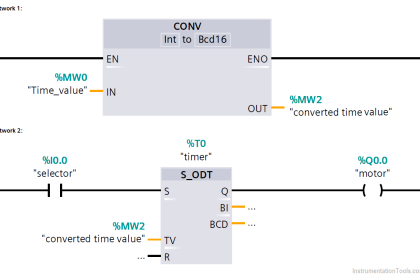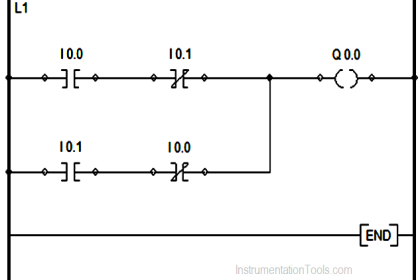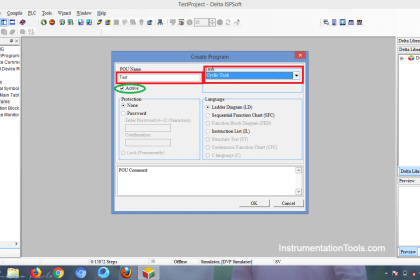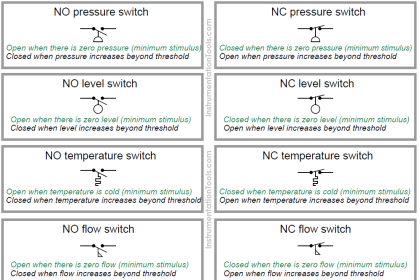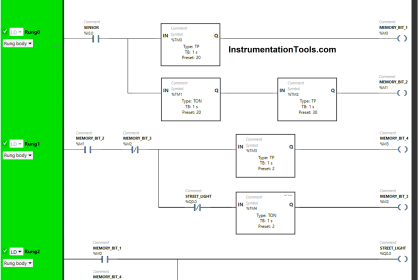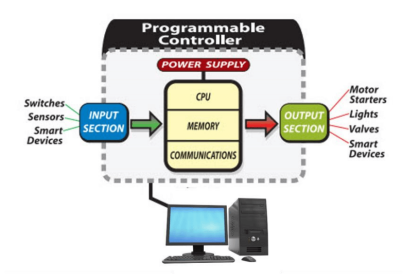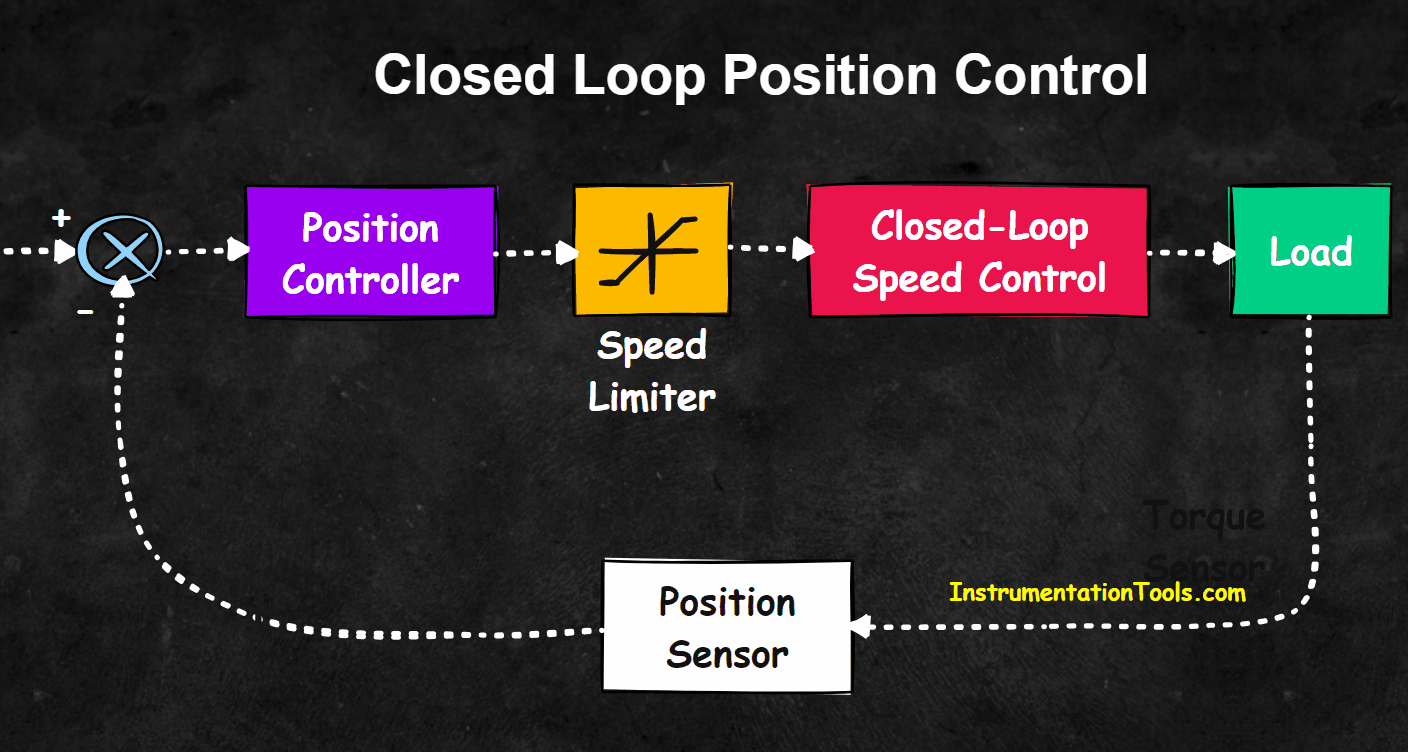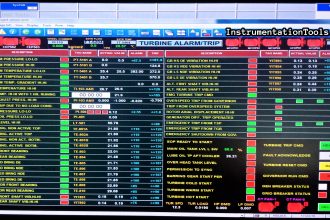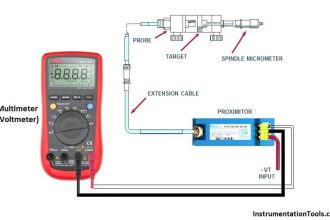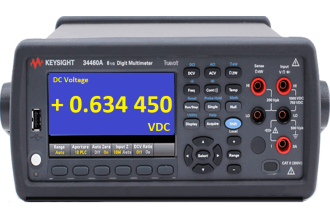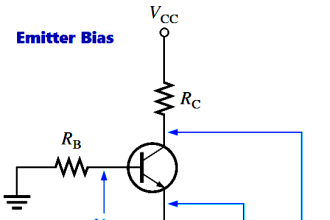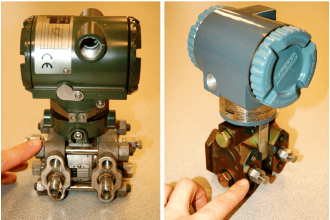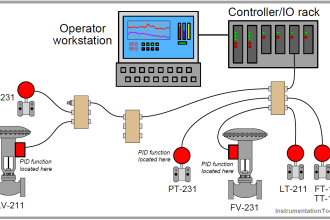Get answers to the top 100+ SCADA questions from the industrial automation and control systems.
SCADA Questions
The below video helps you to understand the first 26 questions with their explanations.
Question 1
What is a tag in SCADA?
A. A data point for monitoring and control
B. A control algorithm with predefined logic
C. A user interface element in SCADA
D. A network protocol in SCADA
Show the Answer
A data point for monitoring and control
Question 2
What are alarms in SCADA?
A. Automated control functions
B. Historical data logs
C. Alert operators about abnormal conditions
D. Sensor values indication
Show the Answer
Alert operators to abnormal conditions
Question 3
What are trip signals in SCADA?
A. Operator login credentials
B. Data transmission rates
C. Control signals for equipment start-up
D. Control signals for equipment shutdown
Show the Answer
Control signals for equipment shutdown
Question 4
What are trends in SCADA?
A. Alarm summaries
B. Graphical representations of data over time
C. System configuration settings
D. User access logs
Show the Answer
Graphical representations of data over time
Question 5
What is a Historian in SCADA?
A. A network communication protocol
B. A database for long-term data storage
C. A database for short-term data storage
D. An operator interface tool
Show the Answer
A database for long-term data storage
Question 6
What is a SCADA architecture?
A. The programming language used
B. The structural design of SCADA systems
C. The communication protocol employed
D. The user interface layout
Show the Answer
The structural design of SCADA systems
Question 7
What is a SCADA master station?
A. A remote sensor device
B. A data encryption module
C. The central control unit in SCADA
D. A network router
Show the Answer
The central control unit in SCADA
Question 8
What is the function of a SCADA server?
A. Configuring network hardware
B. Stores and process the data
C. Providing user authentication
D. Generating power for devices
Show the Answer
Stores and process the data
Question 9
What is the role of an engineering workstation in SCADA?
A. Controlling field devices directly
B. Developing and maintaining SCADA applications
C. Managing network traffic
D. Storing historical data
Show the Answer
Developing and maintaining SCADA applications
Question 10
What is the role of OPC in SCADA?
A. Enabling interoperability between different devices and software
B. Managing process control devices
C. Encrypting SCADA communication
D. Configuring control algorithms
Show the Answer
Enabling interoperability between different devices and software
Question 11
What is DDE (Dynamic Data Exchange) used in SCADA systems?
A. Offline data sharing between applications
B. Real-time data sharing between applications
C. Network configuration tool for upgradations
D. It provides the data encryption & remote access
Show the Answer
Real-time data sharing between applications
Question 12
How are setpoints configured in SCADA systems?
A. By setting network parameters
B. By creating user accounts
C. By designing HMI screens
D. By defining desired values for process variables
Show the Answer
By defining desired values for process variables
Question 13
What is the significance of a tag database in SCADA?
A. Database for network settings
B. Storage for user credentials
C. Central repository for managing process variables
D. Interface for hardware devices
Show the Answer
Central repository for managing process variables
Question 14
What are the common data types used in SCADA tags?
A. IP address, subnet mask, gateway
B. Integer, float, boolean, string
C. File, directory, path
D. Command, response, status
Show the Answer
Integer, float, boolean, string
Question 15
How is real-time data displayed in SCADA systems?
A. Through graphical user interfaces
B. Using printed reports
C. Through email notifications
D. By manual entry
Show the Answer
Through graphical user interfaces
Question 16
What are the different types of SCADA architectures?
A. Single-user, multi-user, web-based, cloud-based
B. Fixed, modular, scalable, portable
C. Centralized, distributed, networked, hybrid
D. Basic, advanced, intermediate, expert
Show the Answer
Centralized, distributed, networked, hybrid
Question 17
What are the key components of a SCADA system in Electrical Substations?
A. Web browsers, mobile apps, desktop clients, IoT devices
B. Algorithms, data models, user roles, permissions
C. Field devices, communication network, master station, HMI
D. User manuals, training programs, certification, support
Show the Answer
Field devices, communication network, master station, HMI
Question 18
What is the role of a data concentrator in SCADA?
A. Aggregates and processes data from single field devices
B. Configures network settings and provides periodic backups
C. Aggregates and processes data from multiple field devices
D. Aggregates and processes data from multiple power supply units
Show the Answer
Aggregates and processes data from multiple field devices
Question 19
What are the scripting languages commonly used in SCADA software?
A. SQL, PL/SQL, T-SQL, MySQL
B. Fortran, COBOL, Pascal, Ada
C. HTML, CSS, XML, JSON
D. VBScript, JavaScript, Python, Lua
Show the Answer
VBScript, JavaScript, Python, Lua
Question 20
What are alarm thresholds and limits in SCADA?
A. User permissions that control system alarms
B. Network alarms for communication protocols
C. Predefined values that trigger alarms for specific process variables
D. Alarm display settings for graphical interfaces
Show the Answer
Predefined values that trigger alarms for specific process variables
Question 21
What are the typical network topologies used in SCADA systems?
A. Hub, spoke, clustered, distributed
B. Star, ring, bus, mesh
C. Grid, linear, circular, random
D. Client-server, peer-to-peer
Show the Answer
Star, ring, bus, mesh
Question 22
What is the importance of time synchronization in SCADA systems?
A. Provides quick data collection from field devices
B. Ensures accurate event logging and coordination
C. Enables real-time user communication
D. Manages user access rights across different SCADA systems
Show the Answer
Ensures accurate event logging and coordination
Question 23
What are the typical features of SCADA alarm systems?
A. Translation, rotation, scaling, reflection
B. Compression, decompression, streaming, buffering
C. Scheduling, routing, encryption, decryption
D. Prioritization, escalation, acknowledgment, logging
Show the Answer
Prioritization, escalation, acknowledgment, logging
Question 24
How are trends and historical data used in SCADA?
A. For performance analysis and predictive maintenance
B. For network configuration and backup restoration
C. For user access management across all systems
D. For real-time data display in the SCADA
Show the Answer
For performance analysis and predictive maintenance
Question 25
How is data logging managed in SCADA?
A. Using Historian databases and scheduled backups
B. Through real-time display screens
C. Using external USB drives and Hard disks
D. Without using network gateways
Show the Answer
Using Historian databases and scheduled backups
Question 26
How does SCADA software support alarm management?
A. By providing tools for configuration, monitoring, and response
B. By compressing data for long-term data storage
C. By routing data through secure channels
D. By encrypting alarm messages
Show the Answer
By providing tools for configuration, monitoring, and response
Top Supervisory Control and Data Acquisition Questions
This SCADA video provides you the detailed explanations for the next 26 questions.
Question 27
What are the steps for commissioning a new SCADA system?
A. Networking, IP addressing, domain setup, firewall configuration
B. Firmware updating, power cycling, remote access setup, email alert configuration
C. Planning, installation, configuration, testing, validation
D. Data entry, user creation, password setting, encryption
Show the Answer
Planning, installation, configuration, testing, validation
Question 28
How are alarms prioritized in SCADA systems?
A. By user-defined labels
B. Based on severity and impact on operations
C. By alphabetical order
D. By network location
Show the Answer
Based on severity and impact on operations
Question 29
What is the role of an operator workstation in SCADA?
A. Monitoring and controlling industrial processes
B. Developing SCADA applications
C. Only Monitor industrial processes
D. Only controls industrial processes
Show the Answer
Monitoring and controlling industrial processes
Question 30
How does SCADA software handle protocol conversion?
A. By employing user scripts
B. Using hardware firewalls
C. Through manual configuration
D. Using converters or gateways
Show the Answer
Using converters or gateways
Question 31
What is the difference between SCADA and PLC?
A. SCADA is hardware, PLC is software
B. SCADA operates devices, PLC only monitors
C. SCADA is for monitoring, PLC is for control
D. SCADA uses cloud storage, PLC uses local storage
Show the Answer
SCADA is for monitoring, PLC is for control
Question 32
What are the common communication protocols used in SCADA systems?
A. IPv4, IPv6, TCP, UDP, PLC
B. SQL, NoSQL, XML, JSON
C. FTP, HTTP, SMTP, POP3
D. Modbus, DNP3, IEC 60870, OPC
Show the Answer
Modbus, DNP3, IEC 60870, OPC
Question 33
How does SCADA software integrate with PLCs?
A. Through physical connections only
B. FTP, HTTP, SMTP, POP3
C. Only by sharing IP addresses
D. Through communication protocols and drivers
Show the Answer
Through communication protocols and drivers
Question 34
What are digital and analog tags in SCADA?
A. Digital tags represent binary states, analog tags represent continuous values
B. Digital tags manage network settings, analog tags handle user data
C. Digital tags are for security, analog tags for performance
D. Analog tags represent binary states, digital tags represent continuous values
Show the Answer
Digital tags represent binary states, analog tags represent continuous values
Question 35
How are custom scripts used in SCADA software?
A. To manage network traffic and block cyber attacks
B. To design user interfaces with custom graphical design
C. For manual tasks and enhance system security
D. To automate tasks and enhance system functionality
Show the Answer
To automate tasks and enhance system functionality
Question 36
What are the typical use cases for scripting in SCADA?
A. Hardware design, firmware updates, user training
B. Network setup, IP allocation, DNS management
C. Alarm handling, data processing, report generation
D. Inventory tracking, payroll processing, CRM integration
Show the Answer
Alarm handling, data processing, report generation
Question 37
What are the steps for integrating new devices into a SCADA system?
A. User training, network redesign, data migration, software degrade
B. Just connect the device to the PLC and it will automatically program the logic
C. Power cycling, software reboot, database backup, firewall setup
D. Device configuration, protocol setup, driver installation, testing
Show the Answer
Device configuration, protocol setup, driver installation, testing
Question 38
How do you perform system diagnostics and troubleshooting in SCADA software?
A. Through operator surveys and feedback
B. Using external data storage devices
C. By using the offline data to analyze the problems
D. Using diagnostic tools, logs, and real-time monitoring
Show the Answer
Using diagnostic tools, logs, and real-time monitoring
Question 39
What are the security features commonly implemented in SCADA software?
A. User authentication, encryption, firewall, access control
B. User profiles, data archiving, report generation
C. Data compression, file synchronization, auto-updates
D. Real-time data streaming, load balancing, caching
Show the Answer
User authentication, encryption, firewall, access control
Question 40
How do you manage user roles and permissions in SCADA software?
A. By enabling guest access for all users in SCADA
B. Through manual logging of SCADA user activities
C. By defining roles, assigning permissions, and regular audits
D. By setting default passwords for all SCADA users
Show the Answer
By defining roles, assigning permissions, and regular audits
Question 41
What is event logging in SCADA systems?
A. Recording system activities and changes for analysis
B. Generating visual trends and reports for all alarms
C. Scheduling system maintenance tasks in SCADA
D. Recording sensors data all the time in SCADA system
Show the Answer
Recording system activities and changes for analysis
Question 42
What is report generation in SCADA software?
A. Performing real-time data analysis and system migrations
B. Creating detailed reports based on collected data
C. Encrypting data for security purposes and decrypting the same
D. Creating detailed reports based on user inputs
Show the Answer
Creating detailed reports based on collected data
Question 43
How to perform system upgrades in SCADA without disrupting operations?
A. Scheduling upgrades during low activity periods, using redundant systems
B. By ignoring pending alarms, trips, and forced signals
C. Through complete system shutdown
D. By manually entering new data into the SCADA server
Show the Answer
Scheduling upgrades during low activity periods, using redundant systems
Question 44
How to configure and manage backup servers in SCADA?
A. Setting up redundant systems, regular backups, and testing recovery
B. By using offline gateway communication channels
C. Only by setting up the PLC and SCADA systems via wireless communication
D. By installing antivirus software and upgrading the firewall
Show the Answer
Setting up redundant systems, regular backups, and testing recovery
Question 45
What is remote access in SCADA?
A. SCADA works only on local computer and do not provide any remote support
B. The ability to monitor and control SCADA systems from offsite locations using secure communication channels
C. The practice of storing data remotely on field devices without network connectivity
D. The implementation of physical security measures at remote facilities
Show the Answer
The ability to monitor and control SCADA systems from offsite locations using secure communication channels
Question 46
How does SCADA software handle failover and disaster recovery?
A. By shutting down all systems temporarily
B. Using manual recovery processes
C. Automatic switchover using redundant systems
D. Through data compression and storage
Show the Answer
Automatic switchover using redundant systems
Question 47
How does SCADA software handle version control?
A. Through real-time data analysis and software migrations
B. By reinstalling the software periodically
C. Using manual documentation and reports generation
D. By tracking changes, maintaining backups, and auditing updates
Show the Answer
By tracking changes, maintaining backups, and auditing updates
Question 48
How does SCADA software handle configuration changes?
A. By ignoring changes until they cause issues
B. Through change management processes and approval workflows
C. Using external consultants only
D. By allowing any user to make changes
Show the Answer
Through change management processes and approval workflows
Question 49
What are the steps for performing a SCADA system audit?
A. Reviewing logs, verifying settings, testing backups, assessing security
B. Upgrading hardware, installing software, training users, generating reports
C. Disabling alarms, resetting user passwords, recalibrating sensors
D. Conducting surveys, holding meetings, drafting proposals, seeking approvals
Show the Answer
Reviewing logs, verifying settings, testing backups, assessing security
Question 50
How do you manage historical data archiving in SCADA?
A. Through manual deletion of old data
B. By storing data on local devices
C. By using databases and setting data retention policies
D. Using real-time data streams only
Show the Answer
By using databases and setting data retention policies
Question 51
What is network topology in SCADA?
A. The protocol for data transfer between sensors
B. The type of sensors used in the system
C. The design of the control algorithms for valves & sensors
D. The layout of interconnected devices in the network
Show the Answer
The layout of interconnected devices in the network
Question 52
What is a batch process in SCADA?
A. A real-time adjustment mechanism in process industries
B. Processing in set intervals with specific start and end points
C. A continuous, non-stop industrial operation
D. Processing in set intervals without specific start and end points
Show the Answer
Processing in set intervals with specific start and end points
SCADA PLC MCQ
This PLC SCADA video MCQ gives the explanations for the next 26 SCADA questions.
https://www.youtube.com/watch?v=yoMwpFMfTFo&list=PLI78ZBihrkE3r0spCEdNIGmbaEfKPqUSa&index=39
Question 53
What is a communication link in SCADA?
A. A pathway for data exchange between SCADA components
B. A storage location for control programs in PLC
C. A protocol for software updates and backup restore
D. A user interface between sensor and motors
Show the Answer
A pathway for data exchange between SCADA components
Question 54
What is the function of a SCADA gateway?
A. Managing user authentication and access control within the SCADA system
B. Providing real-time data analytics and generating detailed reports
C. Facilitates communication between different networks and protocols
D. Facilitates communication between different sensors and actuators
Show the Answer
Facilitates communication between different networks and protocols
Question 55
How do you manage firmware updates in SCADA systems?
A. By updating the software only when issues arise
B. By disabling all security features temporarily
C. By allowing users to download updates independently
D. By planning updates, validating compatibility, and testing thoroughly
Show the Answer
By planning updates, validating compatibility, and testing thoroughly
Question 56
What is the role of APIs in SCADA software integration?
A. APIs automatically identify the failed field devices and performs troubleshooting
B. APIs are used to establish communication with all types of sensors
C. Managing hardware configurations and optimizing network performance
D. Enabling seamless data exchange between different systems
Show the Answer
Enabling seamless data exchange between different systems
Question 57
How does SCADA software support remote monitoring and control?
A. By requiring operators to be physically present at the control center at all times
B. SCADA works only on local computer and do not provide any remote support
C. Through web interfaces, mobile applications, and secure communication protocols
D. By limiting system access to local network connections only
Show the Answer
Through web interfaces, mobile applications, and secure communication protocols
Question 58
What are the common pitfalls in SCADA software configuration and how can they be avoided?
A. Frequent hardware updates, extensive user training, regular backups
B. Ignoring real-time data, avoiding automation, disabling alarms
C. Inadequate security measures, improper user roles, poor documentation
D. Overuse of manual processes, lack of data encryption, limited network access
Show the Answer
Inadequate security measures, improper user roles, poor documentation
Question 59
What is scaling of a SCADA system?
A. Increasing the number of user licenses online without shutdown
B. The process of expanding the system’s alarms and trips
C. Decreasing the number of user licenses online without shutdown
D. The process of expanding the system’s capacity and capabilities
Show the Answer
The process of expanding the system’s capacity and capabilities
Question 60
What are the key performance indicators (KPIs) tracked in SCADA systems?
A. Number of I/Os, Number of CPUs, Number of sensors
B. Power consumption, office supplies usage, employee attendance
C. System uptime, response time, alarm frequency, data accuracy
D. Number of user logins, file downloads, email sent, web traffic
Show the Answer
System uptime, response time, alarm frequency, data accuracy
Question 61
What is the importance of alarm rationalization in SCADA?
A. To reduce alarm fatigue and improve response effectiveness
B. To increase the number of alarms for thorough monitoring
C. To prioritize routine maintenance alarms
D. To eliminate the need for operator intervention
Show the Answer
To reduce alarm fatigue and improve response effectiveness
Question 62
What are the advantages of using open-source SCADA software?
A. Limited functionality, lack of updates, no support, high cost
B. Cost savings, flexibility, community support, transparency
C. Guaranteed security, proprietary support, high licensing fees, vendor lock-in
D. High entry barriers, restricted access, exclusive features, low adoption
Show the Answer
Cost savings, flexibility, community support, transparency
Question 63
What are the best practices for designing SCADA screens?
A. Keeping interfaces simple, using clear graphics, prioritizing critical data
B. Emphasizing bright colors, adding unnecessary animations, ignoring user feedback
C. Using interfaces without any animations, using clear graphics, prioritizing critical data
D. Using complex graphics, maximizing data density, minimizing user input
Show the Answer
Keeping interfaces simple, using clear graphics, prioritizing critical data
Question 64
What is the difference between polling and event-driven communication in SCADA?
A. Polling is used for alarms, event-driven for data logging
B. Polling continuously checks for data, event-driven responds to specific changes
C. Polling is faster, event-driven is more reliable
D. Event-driven continuously checks for data, polling responds to specific changes
Show the Answer
Polling continuously checks for data, event-driven responds to specific changes
Question 65
How does SCADA software handle data import and export tasks?
A. Relying exclusively on specialized, proprietary middleware solutions
B. Through built-in tools, standard formats, and configurable options
C. By encrypting data continuously and uses only fieldbus protocols
D. Requiring extensive manual data transcription by operators
Show the Answer
Through built-in tools, standard formats, and configurable options
Question 66
What are the methods for data validation and error checking in SCADA?
A. Ignoring minor data inconsistencies, focusing solely on critical data points, and limiting the use of automated systems
B. Relying on external consultants to periodically audit the data, performing extensive data replication, and using deprecated communication protocols
C. Implementing predefined validation rules, conducting real-time data monitoring, and utilizing automated alert systems
D. Manually reviewing data entries at regular intervals, applying complex encryption algorithms, and using proprietary data formats
Show the Answer
Implementing predefined validation rules, conducting real-time data monitoring, and utilizing automated alert systems
Question 67
What are the methods for integrating SCADA with MES and ERP systems?
A. Relying solely on manual data transfers between systems
B. Using APIs, middleware, and standard communication protocols like OPC
C. Using non-standard communication formats unique to each vendor
D. Implementing proprietary hardware solutions without software support
Show the Answer
Using APIs, middleware, and standard communication protocols like OPC
Question 68
How do you perform real-time data filtering in SCADA software?
A. Using outdated software tools that lack real-time capabilities
B. By manually reviewing and sorting data streams periodically
C. By configuring dynamic data filters, setting appropriate data thresholds, and implementing advanced signal processing algorithms
D. Relying on external softwares to filter data off-site
Show the Answer
By configuring dynamic data filters, setting appropriate data thresholds, and implementing advanced signal processing algorithms
Question 69
What is an analog input in SCADA?
A. An analog command from the operator
B. A signal that is fixed over a range
C. A binary signal indicating a discrete state
D. A signal that varies continuously over a range
Show the Answer
A signal that varies continuously over a range
Question 70
What is a digital input in SCADA?
A. A signal that is fixed over a range
B. A type of communication protocol used between transmitters & PLC
C. A binary signal indicating an on/off state
D. A binary signal that varies continuously over a range
Show the Answer
A binary signal indicating an on/off state
Question 71
What is an analog output in SCADA?
A. A binary signal to turn devices on or off
B. A configuration setting for network parameters
C. A type of communication protocol used between valves & PLC
D. A continuous signal used to control a process variable
Show the Answer
A continuous signal used to control a process variable
Question 72
What is a digital output in SCADA?
A. A binary signal that controls devices like level sensor, flow sensor
B. A binary signal that controls discrete devices like relays and motors
C. A type of communication protocol used between sensors & PLC
D. A continuous signal for adjusting process parameters
Show the Answer
A binary signal that controls discrete devices like relays and motors
Question 73
What is Fieldbus in SCADA?
A. A communication protocol
B. A type of sensor
C. A power supply unit
D. A data storage system
Show the Answer
A communication protocol
Question 74
What is a sensor in SCADA?
A. A device to measure physical properties
B. A power supply unit
C. A communication protocol
D. A data storage unit
Show the Answer
A device to measure physical properties
Question 75
What is an actuator in SCADA?
A. A software application
B. A device to move or control a mechanism
C. A network switch
D. A data collection unit
Show the Answer
A device to move or control a mechanism
Question 76
What is a control center in SCADA?
A. A power distribution unit
B. An electrical control unit for motors
C. A field sensor network
D. A centralized monitoring station
Show the Answer
A centralized monitoring station
Question 77
What is Ethernet in SCADA?
A. A low-speed communication protocol for networking devices
B. A high-speed communication protocol for networking devices
C. It is a power cable to provide required power supply to the SCADA
D. A wireless sensor network between PLC and SCADA
Show the Answer
A high-speed communication protocol for networking devices
Question 78
What is system uptime in SCADA?
A. The duration of a data transmission
B. The speed of data processing
C. The percentage of time the system is operational
D. The frequency of system updates
Show the Answer
The percentage of time the system is operational
SCADA Automation Questions
This SCADA automation video provides you the explanations and answers for the remaining questions.
https://www.youtube.com/watch?v=fnDns7Pnzcc&list=PLI78ZBihrkE3r0spCEdNIGmbaEfKPqUSa&index=40
Question 79
What are the common challenges in SCADA system integration?
A. Lack of user interfaces, absence of protocols, and low data accuracy
B. Compatibility issues, data security, and scalability
C. High licensing costs, slow internet speed, and user training
D. Limited hardware options, no community support, and high maintenance
Show the Answer
Compatibility issues, data security, and scalability
Question 80
What are the key considerations for SCADA system interoperability?
A. Single vendor solutions, closed networks, and static configurations
B. Proprietary software, high costs, and minimal training
C. Standard protocols, flexible architecture, and compatibility testing
D. Low data rates, manual processes, and limited automation
Show the Answer
Standard protocols, flexible architecture, and compatibility testing
Question 81
What is user authentication and role-based access control in SCADA software?
A. Limiting system access to only remote locations
B. Ensuring only authorized users can access and perform specific actions
C. Allowing all users to perform any action using remote control and monitoring
D. Ensuring only unauthorized users can access and perform specific actions
Show the Answer
Ensuring only authorized users can access and perform specific actions
Question 82
How do you troubleshoot communication issues in SCADA systems?
A. Rebooting all connected devices including the PLC
B. Installing additional hardware and software tools
C. Checking network configurations, testing connections, and reviewing logs
D. Disabling all security protocols permanently
Show the Answer
Checking network configurations, testing connections, and reviewing logs
Question 83
What are the benefits of implementing a redundant SCADA system?
A. Reduced installation costs, simplified architecture, and fewer user roles
B. Lower data accuracy, slower processing speed, and limited scalability
C. Greater complexity, higher maintenance requirements, and lower security
D. Increased reliability, fault tolerance, and uninterrupted operation
Show the Answer
Increased reliability, fault tolerance, and uninterrupted operation
Question 84
How do you handle data synchronization in a distributed SCADA system?
A. Using time-stamping, NTP, and regular data audits
B. Using non-standard protocols and custom scripts
C. Using historian servers and data backup servers
D. Through batch processing of data once a month
Show the Answer
Using time-stamping, NTP, and regular data audits
Question 85
What are the key features of modern SCADA systems?
A. Remote access, real-time monitoring, advanced analytics, and cybersecurity
B. High maintenance costs, complex interfaces, and low data accuracy, and, cybersecurity
C. Single-user operation, local data storage, and basic alarm systems with large data storage
D. Limited user access, manual reporting, fixed architecture, and no remote capabilities
Show the Answer
Remote access, real-time monitoring, advanced analytics, and cybersecurity
Question 86
What are the typical steps for SCADA system maintenance?
A. Regular updates, backups, hardware checks, and system audits
B. Outsourcing all operations, avoiding updates, and manual record-keeping
C. Check alarms, disabling logs, and using outdated protocols
D. Increasing user licenses, reducing security measures, and manual data entry
Show the Answer
Regular updates, backups, hardware checks, and system audits
Question 87
How is cybersecurity implemented in SCADA systems?
A. By implementing unstandardized security protocols unique to each device
B. By relying solely on physical security measures and limited network access
C. Using firewalls, encryption, intrusion detection systems, and regular security updates
D. Through frequent software reinstallations and system reboots
Show the Answer
Using firewalls, encryption, intrusion detection systems, and regular security updates
Question 88
What is the function of redundancy in SCADA systems?
A. Increasing system complexity without benefit
B. Ensuring continuous operation in case of component failure
C. Simplifying system architecture
D. Reducing the number of available devices
Show the Answer
Ensuring continuous operation in case of component failure
Question 89
What is the significance of latency in SCADA communication?
A. Reduces the number of user interfaces needed
B. Increases the number of user interfaces needed
C. Affects the memory capacity and CPU speed
D. Affects the speed and reliability of data transmission
Show the Answer
Affects the speed and reliability of data transmission
Question 90
What is the role of a Remote Terminal Unit (RTU) in a SCADA system?
A. Managing network configurations and optimizing communication protocols
B. Collecting data from field devices and transmitting it to the SCADA master station
C. Only Collects data from SCADA and transmits it to the PLC
D. Providing a user interface for direct operator interaction with the SCADA system
Show the Answer
Collecting data from field devices and transmitting it to the SCADA master station
Question 91
How are thresholds and limits configured in SCADA for process control?
A. By setting predefined values based on process requirements
B. Through manual adjustments without any predefined criteria
C. Using default manufacturer settings without modification
D. By random selection
Show the Answer
By setting predefined values based on process requirements
Question 92
How do SCADA systems support regulatory compliance?
A. By limiting data collection to essential parameters only
B. By maintaining accurate records, generating compliance reports, and providing audit trails
C. Through manual record-keeping and updating the systems database
D. By ignoring regulations and using the real-time data analysis
Show the Answer
By maintaining accurate records, generating compliance reports, and providing audit trails
Question 93
What is the purpose of regular software updates in SCADA systems?
A. To reset all system settings
B. To fix bugs, enhance security, and improve functionality
C. To decrease system performance
D. To remove user access controls
Show the Answer
To fix bugs, enhance security, and improve functionality
Question 94
How are hardware checks performed in SCADA maintenance?
A. By only monitoring software performance
B. Through annual system shutdowns
C. By inspecting physical components and verifying their operation
D. By disabling hardware alarms
Show the Answer
By inspecting physical components and verifying their operation
Question 95
What is the role of system audits in SCADA maintenance?
A. Reducing the need for backups
B. Increasing the complexity of the system
C. Limiting user access to critical functions
D. Ensuring compliance, identifying issues, and improving system performance
Show the Answer
Ensuring compliance, identifying issues, and improving system performance
Question 96
How do you address inconsistent data readings from sensors in SCADA systems?
A. Always consider the last good value instead of checking the issue
B. Ignoring anomalies and assuming average values
C. Calibrating sensors, checking for interference, and ensuring proper installation
D. Replacing sensors without diagnostics
Show the Answer
Calibrating sensors, checking for interference, and ensuring proper installation
Question 97
What steps should be taken if a SCADA system experiences frequent alarms?
A. Ignoring alarm messages and continuing operations
B. Increasing the number of sensors to generate more data
C. Disabling all alarms temporarily
D. Reviewing alarm thresholds, rationalizing alarms, and investigating root causes
Show the Answer
Reviewing alarm thresholds, rationalizing alarms, and investigating root causes
Question 98
How can you troubleshoot SCADA system crashes?
A. Reducing the number of user sessions
B. Reviewing system logs, checking hardware health, and updating software
C. Ignoring error messages and restarting the system
D. Immediately install the operating system with fresh software
Show the Answer
Reviewing system logs, checking hardware health, and updating software
Question 99
What is a common reason for SCADA system overheating and how can it be resolved?
A. Poor ventilation; resolved by improving cooling and airflow
B. Excessive data logging; resolved by reducing data storage
C. Frequent user access; resolved by limiting user logins
D. High humidity; resolved by dehumidifying the area
Show the Answer
Poor ventilation; resolved by improving cooling and airflow
Question 100
What is the recommended approach if SCADA data shows unexpected spikes?
A. Update the SCADA software immediately with latest version
B. Analyzing trends, checking sensor calibration, and investigating process changes
C. Replacing all sensors immediately and update the configuration
D. Ignoring the spikes as anomalies
Show the Answer
Analyzing trends, checking sensor calibration, and investigating process changes
Question 101
What is the best approach to handle SCADA software bugs?
A. Downgrading to an older version and use old software backups
B. Reporting bugs to the vendor, applying patches, and updating the software
C. Ignoring minor bugs and take immediate action on major bugs
D. Limiting software usage and reducing the system load
Show the Answer
Reporting bugs to the vendor, applying patches, and updating the software
Question 102
How can you troubleshoot power supply issues in SCADA systems?
A. Ignoring power fluctuations as they do not have any affect
B. Replacing all hardware components and update the software
C. Checking power sources, ensuring proper grounding, and verifying UPS functionality
D. Immediately replace the power supply units with higher-rating modules
Show the Answer
Checking power sources, ensuring proper grounding, and verifying UPS functionality
Question 103
What steps can be taken if SCADA logs show frequent authentication failures?
A. Allowing unlimited login attempts
B. Disabling authentication features
C. Ignoring failed attempts as they don’t have any affect
D. Investigating user accounts, and reviewing access controls
Show the Answer
Investigating user accounts, and reviewing access controls
Question 104
What can be done if SCADA data is not being logged correctly?
A. Ignoring missing logs and optimize the software
B. Verifying logging configurations, checking storage capacity, and ensuring database integrity
C. Reducing the frequency of data collection and decreasing the memory capacity
D. Disabling data logging features and delete the old trend backups
Show the Answer
Verifying logging configurations, checking storage capacity, and ensuring database integrity
Question 105
What should be done if a SCADA system component frequently fails?
A. Conducting a root cause analysis, replace faulty components, and reviewing system design
B. Ignoring the failures and always replace the faulty component for optimal system performance
C. Limiting the use of the component and downgrade the system logic
D. Disabling error reporting and increase the power supply module rating
Show the Answer
Conducting a root cause analysis, replace faulty components, and reviewing system design
Question 106
What steps should be taken if SCADA fails to receive data from a field device?
A. Rebooting the entire SCADA system and check the status
B. Ignoring the missing data and configure a new field device in place of it
C. Checking communication links, verifying device power, and ensuring correct configurations
D. Replace the field device immediately to restore the process parameter value
Show the Answer
Checking communication links, verifying device power, and ensuring correct configurations
Read Next:
- Difference Between PLC and SCADA
- Learn about SCADA and HMI Systems
- InTouch SCADA Tutorial Course
- SCADA Engineer Job Responsibilities
- Types of SCADA System Architecture
